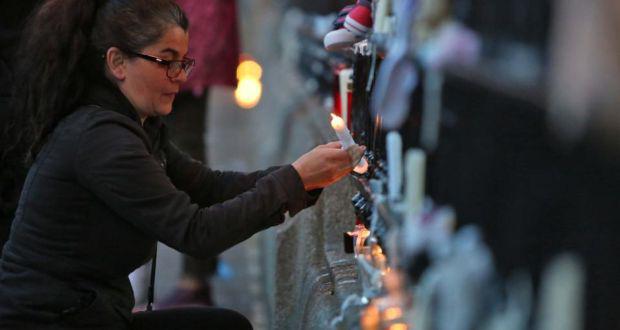|
County homes took harsh toll on ‘unmarried mothers’
By Dr Sean Lucey
In 1925, the medical officer of the Kerry County Home recommended 22 of the institution’s “unmarried mothers” receive two extra eggs daily because they were “required to perform work of an objectionable nature”. When the department of local government and public health inquired further, the religious matron of the home, Sr Gerard, described the women’s harsh work regimes. She informed the department there were no paid ward maids and the women were “engaged from 12 to 14 hours” in labour every day. The institution housed up to 400 patients: the majority were elderly and those suffering from long-term chronic sickness, mental illness and intellectual disabilities, and in need of frequent care. In turn, the “unmarried mothers” carried out much of the manual labour in the home including cleaning, washing and laundry. The matron highlighted that much of this work was “so filthy and unhealthy” it was “almost inhuman” – particularly as the institution had no laundry machine and many of the patients were incontinent – and that some of the women were “almost physical wrecks”.
Stricter regimesCounty homes were multifunctional healthcare and welfare institutions. These differed in many ways from mother and baby homes and Magdalene laundries, where disciplinary regimes were far stricter and based on redemptive morality. Mother and baby homes such as Bessborough in Cork city were designed for women with one “illegitimate” child – or “first offenders” – who were often considered “hopeless cases” whose moral character could be redeemed. Many of the women in county homes had more than one “illegitimate” child. These were“repeat offenders” and subjected to the harshest attitudes. Although the 1927 Poor Law Commission recommended that such “degraded cases” be fully removed from county homes and placed in a new network of institutions for “repeat offenders”, financially straitened local authorities were unwilling to invest in separate institutions. So large numbers of “unmarried” mothers and children remained in county homes despite the protestations of many, including the matron of the Kerry home. On March 31st, 1943, there were 583 “unmarried women” in 31 county homes in Ireland, compared to 352 in the three mother and baby homes run by the Order of the Sacred Heart – Bessborough in Cork City, Sean Ross in Roscrea and Manor Home in Castlepollard – and 201 in Tuam and Pelletstown combined.
Menial workProblematically, these women continued to carry out much of the menial work in the homes, and their unpaid labour helped to keep the the local rates down: this was legal under the public assistance laws. By 1949, the interdepartmental commission into county homes commented on how unmarried women did in a “large part the hard domestic work” of such institutions. A combination of government inertia, parsimonious ratepayers and the wider social environment that gave unmarried mothers limited options ensured these women remained in county homes. Furthermore, county homes were interconnected with mother and baby homes, Magdalene asylums and voluntary-run institutions and women were often transferred between these institutions. County homes also housed a large number of children, many of whom were sent to industrial schools or more commonly boarded out in what was an early fostering service. On March 31st, 1943, 2,330 children were boarded out by local authorities, 1,425 children were in local authority institutions – primarily county homes – and 685 were in external voluntary institutions. While boarded-out children were the focus of local and central government inspection, criticisms were prevalent that they were often used for domestic service and as agricultural labourers.
All aspectsWhile today’s Government decides on the nature of any potential inquiry into mother and baby homes, it is apparent that all aspects of local authority provision for unmarried mothers and children need to be fully considered. County homes, a hangover from the workhouse system, were peculiar institutions that housed not just “unmarried mothers” and children, but large numbers of the “aged” poor, “infirm”, mentally ill and intellectually disabled in independent Ireland. On March 31st, 1943, county homes had a population close to 8,000. These were deeply unpopular with the wider population and remained highly stigmatising. Conditions were bare. Low standardsOne government inspector in 1949 commented on the “low standards of comfort and amenities” in the wards and believed the atmosphere was one of “penury”. He also noted that elderly male residents lacked interest in their surroundings and sat in the day room “motionless and often silent”. The chronic sick were described as “apathetic”. While Minister for Children Charlie Flanagan’s fear of any potential inquiry descending into a “bottomless quagmire” is somewhat understandable, much deeper understandings of Ireland’s institutional past, complex social history and treatment of the vulnerable in the 20th century are needed.
|
.
Any original material on these pages is copyright © BishopAccountability.org 2004. Reproduce freely with attribution.
